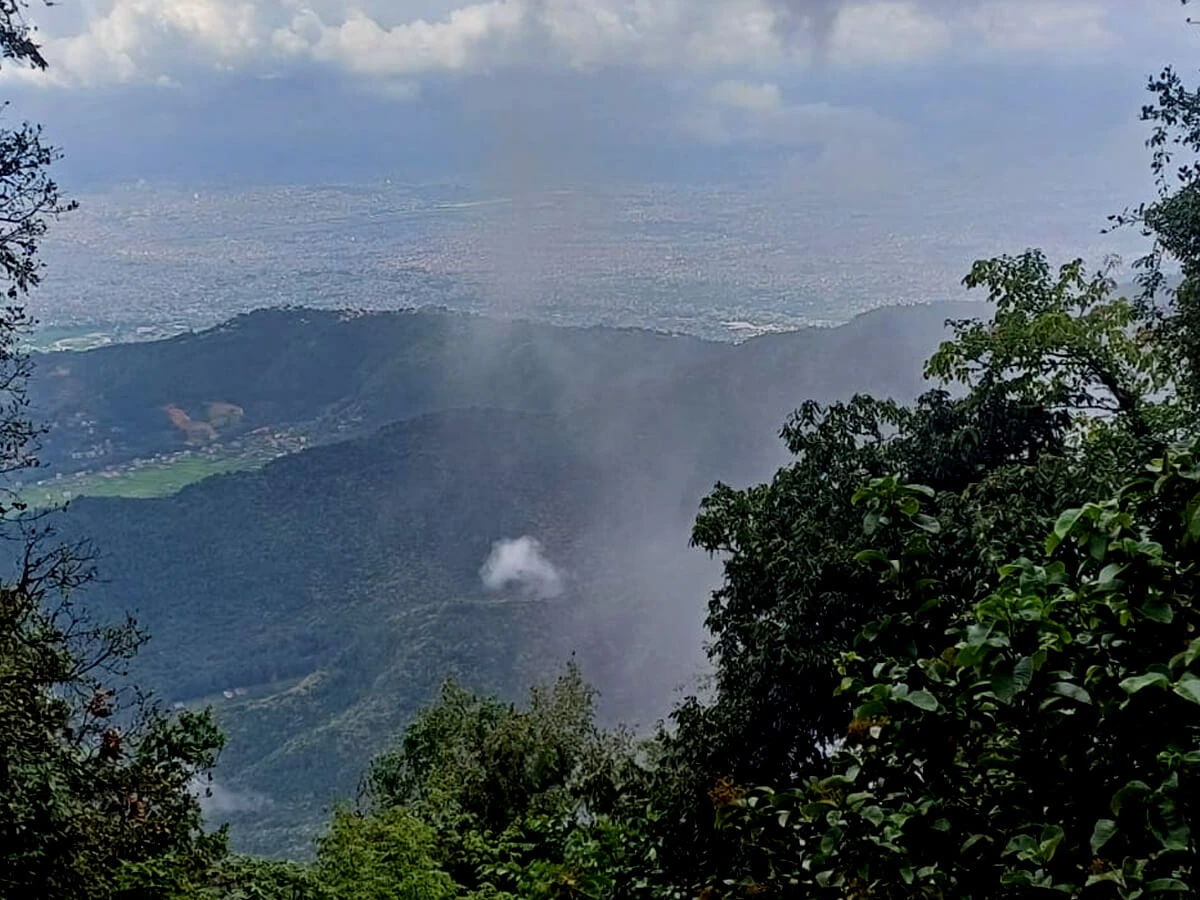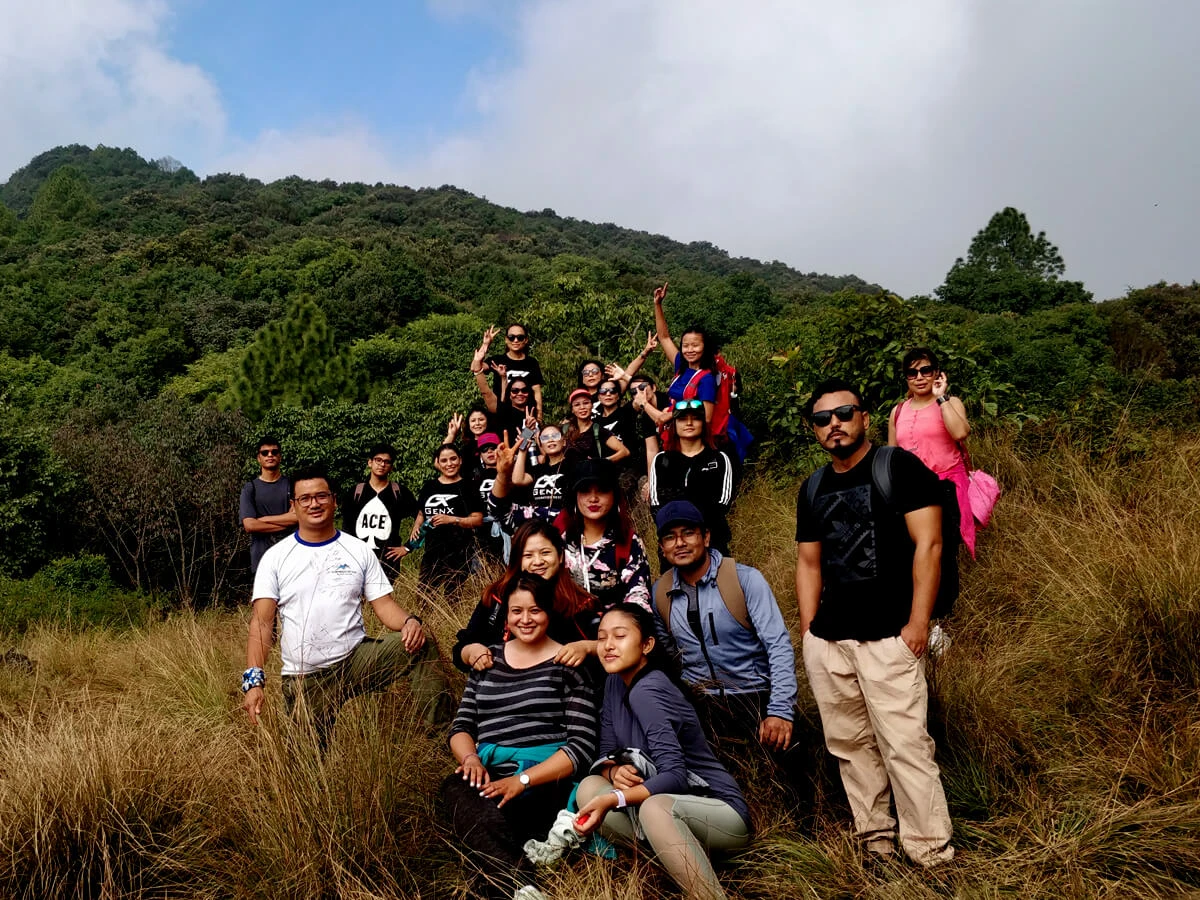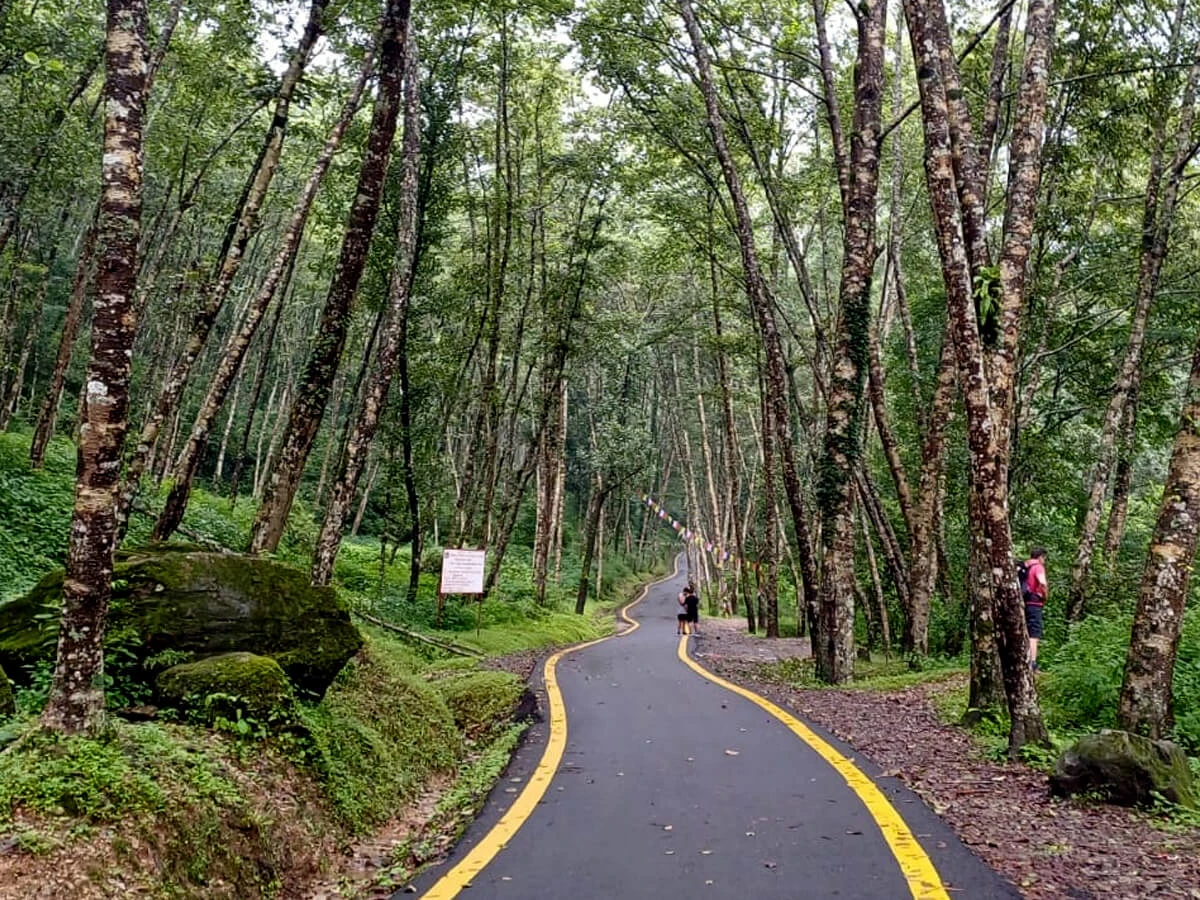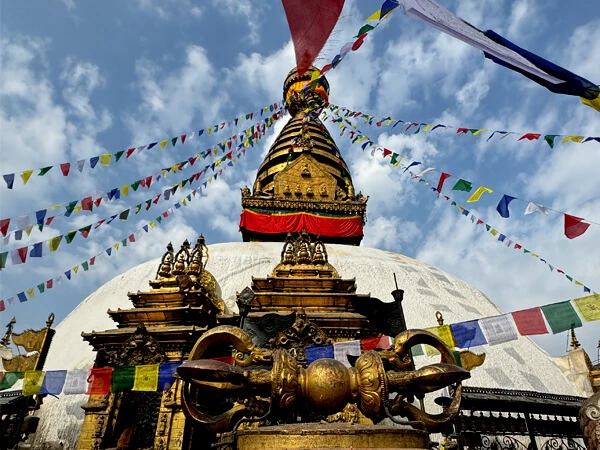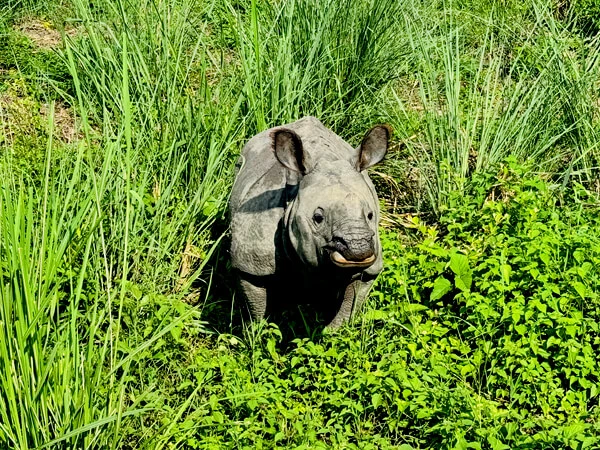Phulchowki Dada (Hill) is the highest hill situated inside and around Kathmandu Valley at 2791 meters above sea level. Phul means Flower, chowki means Garden, and dada means Hill, so it is the Hill of Flowers, which also gives a bird’s eye view of Kathmandu and its magnificent mountain range. Phulchowki Dada is located in the Lalitpur district, where Patan Durbar Square is also located.
Phulchowki Dada (Hill) day hike 2026 is an opportunity to have a short escape from the valley, lead oneself to tranquility, and enjoy the views this Dada offers.
Phulchowki Dada (Hill) Hike Trail Detail)
Phulchowki Dada (Hill) day hike journey starts with a ride of about one hour to the Godawari area and a walk for some hours. The trails go through the green jungles with proper staircases and rough trails as well as through wide off-road. The forest is termed to be sub-tropical. In March-April, the full-blooming rhododendron flower (the national flower of Nepal) changed the entire look of the hill into white and red.
Likewise, the Pulchowki day hike trail lets you enjoy different species of vegetation. The trail is also widely popular and praised for bird watching, such that you can see different species of birds like Flycatcher, Rufous-bellied Niltava, Yellow-browed Tit, Grey-headed Woodpecker, Black-winged Cuckoo-shrike, and many more. At the apex of the Dada, you can enjoy the majestic views of Gaurishanker Himal, Langtang Himal, and Ganesh Himal to the Annapurna range towards the eastern part.
Additionally, Phulchowki Dada has a temple and a Buddhist shrine, and the place is decorated with colorful prayer flags. It is regarded to be a pilgrimage site with cultural values. The temple is of Phulchowki Mai at the top of the hill, bordered by the prayer flag. The place is blessed with religious values along with natural beauty.
People rush to Phulchowki Dada during the winter season to enjoy the snow in the Kathmandu Valley.
National Botanical Garden, Godawari, Lalitpur
In 1962 AD/2019 BS, the National Botanical Garden, Godawari, Lalitpur, was established. The two British designers, G.A.C. Herklots and Tony Schilling, designed the Botanical Garden. Since its establishment, the garden has worked widely as a center of plant conservation, education, research, and recreation. It spreads over an area of 82 hectares of varying topography, where 40 hectares have been developed into various garden units. It is surrounded by a natural evergreen forest dominated by Schima-Castanospsis and Alnus.
It is located at the foothill of Mt. Phulchowki (2765 m), the highest hill of Kathmandu Valley. A natural stream (Godawari) runs through the garden. It is an internationally recognized botanical garden and a member of Botanic Garden Conservation International (BGCI). Features of the Botanical Garden:
Features of the National Botanical Garden, Godawari:
- Floral Diversity: Angiosperms 883 species; Gymnosperms 26 species; Pteridophyte 91 species.
- In-situ conserved plants: 453 species
- Ex-situ conserved plants: 557 species
- Botanical Information and Exhibition Center
- Thematic and Plant Landscape Gardens: Physic garden, Biodiversity education garden, Rock garden, Fern garden, Japanese style garden, Special garden, Terrace garden, Rare and endangered plant garden, Lily garden, Taxonomic family garden (Bentham and Hookers classification system), Tropical plant house, Coronation pond (aquatic plant garden), Rose garden, VVIP plantation garden, Ethno-botanical garden, Canna path
- Garden Sections: Garden Development Section, Conservation and Education Section, Medicinal Plants and Information Section, and Floriculture Section
Highlights
- Phulchowki Dada, the highest hill in Kathmandu Valley, at 2,791 m
- Phulchowki Temple, a religious hilltop
- Bird’s eye view of Kathmandu Valley
- Alluring mountain range view: Gaurishanker Himal, Langtang Himal, Ganesh Himal, Annapurna range
- Bird Watching in Subtropical Forest
- National Botanical Garden, Godawari Park
- Professional, certified, and friendly guide
